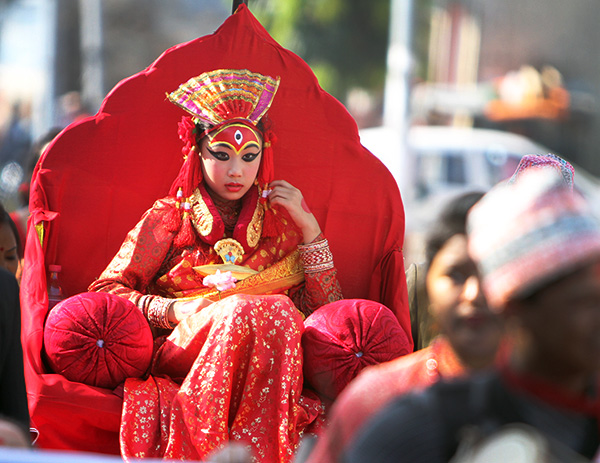 Understanding Nepal’s Nepami people, their language and culture has been not easy as some of us are eager to share what we know before we take some time to preview what we write. We have a duty to disseminate the correct information. It is important that we abide by our duty when we share something in social networks such as Face Book, Tweeter etc.
Understanding Nepal’s Nepami people, their language and culture has been not easy as some of us are eager to share what we know before we take some time to preview what we write. We have a duty to disseminate the correct information. It is important that we abide by our duty when we share something in social networks such as Face Book, Tweeter etc.
1) Newar and Nepal are two terms for the same country, Nepal. Newar is a Prakrit (natural) term while Nepal is a Sanskrit term for the same. There are several other examples of multiple names for places in Nepal. For example, Kathmandu, Kantipur, Kathmadaun and Yen are four different names for the same city of Kathmandu, of which oldest name is Yen (in Nepal Bhasa), Kantipur (in Sanskrit) and Kathmadaun (in Khas language). Likewise, the correct name of the original people of Nepal is Nepami not something else. All other terms such as Newar, Newari were imposed by Khas Barmu, a people mixed with Bahuns and Khas Chhetris, who arrived in Nepal Mandala during the past 240 years from outside. Therefore, it is the duty of the informed people not to offend the original people by calling them Newar or Newari. Let’s call them Nepami.
2) Nepami is not just a community. It is a nation, which ruled historic Nepal Mandala for thousands of years till 1769 when Prithvi Narayan from Gorkha invaded Nepal Mandala. It was after he took Nepal over, he ordered the separation of Newar from Nepal calling the Nepami people “Newar” to dominate them.
3) The Nepami have their own language, which is Nepal Bhasa, not Newar or Newari. As it is a proper name, it should be called Nepal Bhasa in English, too. Like Bahasa Malay, Bahasa Indonesia and Bahasa Brunei, Nepal Bhasa is also a brand name, no one need to change it to any other term for the benefit of foreigners. Foreigners are suppossed to learn and use the correct term of Nepal Bhasa.
4) Nepal Bhasa has its own script which is called Nepal Lipi. Ranjana lipi is a part of Nepal Lipi. It is not the primary script. No one should be confused nor confuse others. Some are confused that Ranjana Lipi is Nepal’s primary script because it is alleged that King Mahendra submitted it as Nepal’s original script as the UNO did not accept Devanagar Lipi as Nepal’s primary script when Nepal applied for UNO membership. His advisors should have advised Nepal Lipi to be Nepal’s primary script. But they were not able to do so because even the advisors were not informed of the correct original script of Nepal. Therefore, it is the duty of the informed people to point out that Nepal Lipi (meaning the script of Nepal) is the script originated in Nepal hence it has been known so.
5) Nepami people themselves may be highly educated compared to other communities in Nepal. But the truth is that they have yet to be mother tongue literate because of the “Nepali Only” (Khas language only) policy in Nepal, which deprived them learning their own mother tongue Nwpal Bhasa.
6) Festival names in Nepal has also been changed by the new rulers after they invaded Nepal Mandala in 1769, those who know the correct names of them must share the original names of those festivals for examples:
𑐖𑐣𑐧𑐴𑐵𑐡𑑂𑐫𑑅 𑐳𑐵𑐮𑐷𑐐𑐸 (जनबहाद्य: सालीगु /Janabahadyo saleegu), not seto macchendra rathayatra;
𑐧𑑄𑐐𑐡𑑂𑐫𑑅 𑐳𑐵𑐮𑐷𑐐𑐸 (बुङगद्य: सालीगु /Bungadyou saleegu), not rato macchendra nath rathayatra;
𑐳𑐵𑐥𑐵𑐬𑐸 (सापारु / Saparu) not gaijatra; 𑐎𑐸𑐩𑐵𑐬𑐷 𑐡𑑂𑐫𑑅 𑐳𑐵𑐮𑐷𑐐𑐸 (कुमारी द्य: सालीगु /Kumari dyosaleegu), not indrajatra;
7) Mhapuja is performed to celebrate the New Year of Nepal Samvat, the original calendar of Nepal. They are part and partial, not separate.
8) Nepami or the original Nepalese were all Vajrayana followers, who worshiped an integrated group of deities including the Buddha, Mahadya etc. The division of Nepami into Buddhist, Hindu, Christian or Muslim is very new.
There are several online portals which provide more information about Nepal Bhasa and Nepal Lipi such as www.nepal-lipi.com. One may visit them for detail information.
These are a few of many things we Nepami are supposed to take note of. Whether one lives in Nepal or abroad, we are first Nepami, then only we become citizens of Nepal and other countries. Let’s share correct information about us, Nepami, our language Nepal Bhasa, our script Nepal Lipi and our religion Vajrayana. Then only, we will be protecting and promoting our identity. Nepal Bhasa is our mother tongue, not Khas Bhasa. Let’s try to use Nepal Bhasa as much as we can use. If you are not literate of your own Nepal Bhasa, you may learn it as there are plenty of books have been published which are available in many bookstores in Nepal. They are also available online. Or you can visit www.nepal-lipi.com for more information.
– Dr. Suwarn Vajracharya
(Source of the photo: Thikthak.com)